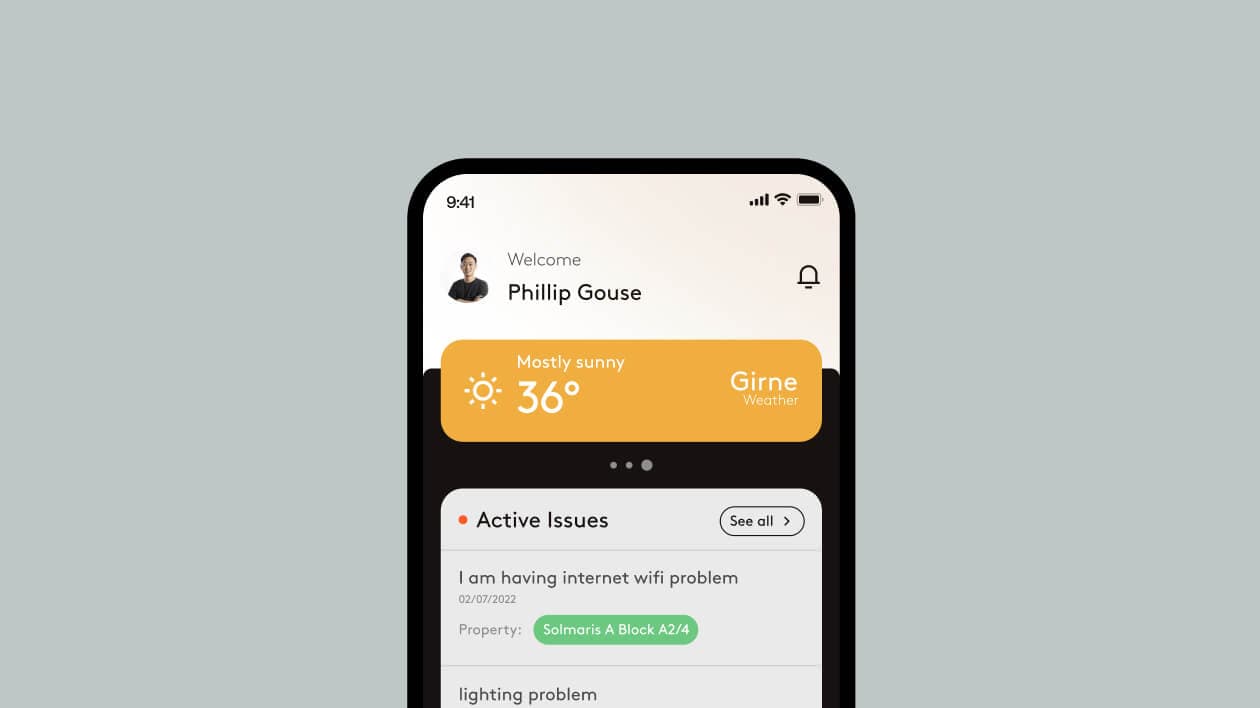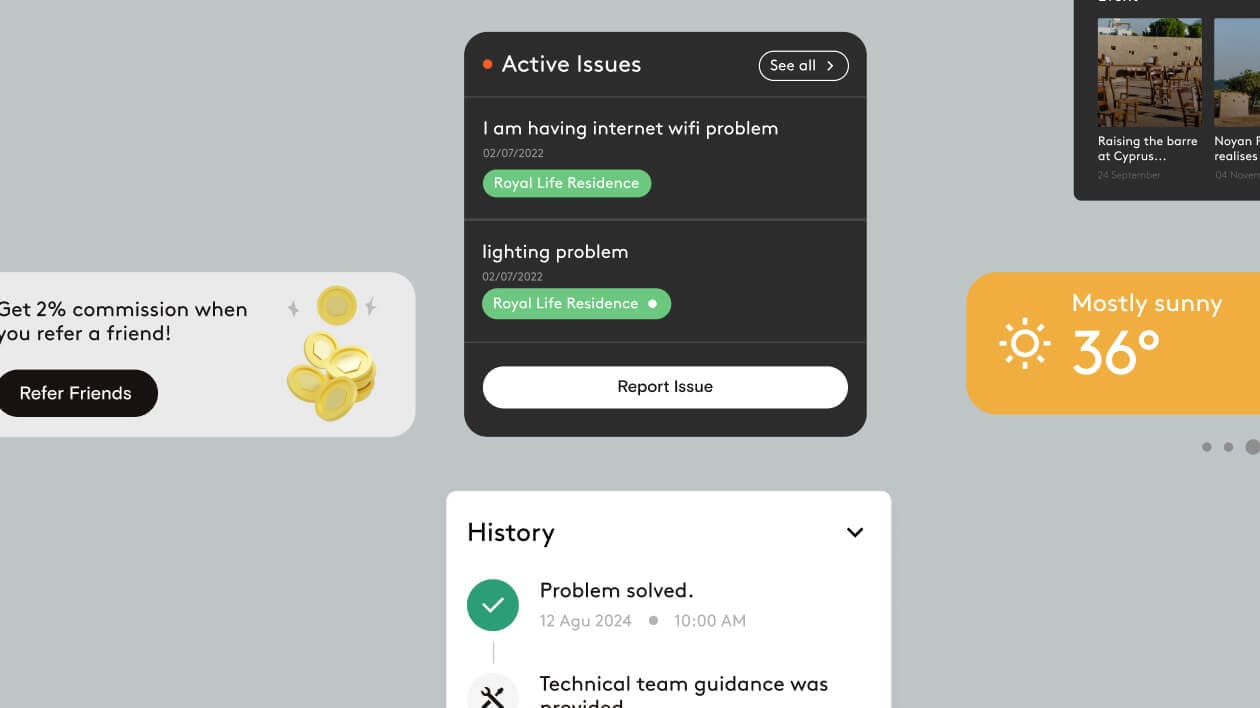Food
At Saypr, we understand the unique challenges and opportunities in the food industry. We're here to help you create a digital experience that's as delicious as the food you serve. Whether you're a restaurant, food delivery service, or a food manufacturer, we can help you connect with your customers, grow your business, and tell your story in a way that resonates.
User-Centric Design
We prioritize understanding your target audience and their needs. Through user research, we gain insights into their preferences, behaviors, and pain points. This allows us to design a website or mobile app that is intuitive, user-friendly, and meets their specific requirements. We believe in creating a seamless and engaging experience for your customers, making it easy for them to find what they need, place orders, and interact with your brand. Our user-centric approach ensures that your digital presence is not only visually appealing but also functional and effective in meeting your business goals.
Agile Development
We embrace an agile development methodology, allowing for flexibility and iterative improvements throughout the project. We work in short sprints, delivering functional prototypes and features regularly, ensuring that we are constantly aligned with your vision and making adjustments based on feedback. This iterative approach allows us to adapt to changing requirements and ensure that the final product meets your specific needs and exceeds your expectations.
Scalability and Performance
We design and develop websites and mobile apps with scalability and performance in mind. We utilize technologies and frameworks that can handle high traffic volumes and ensure a fast and responsive user experience. We also optimize your digital presence for search engines, ensuring that your website or mobile app is easily discoverable and ranks well in search results. Our focus on scalability and performance ensures that your digital presence can grow with your business and reach a wider audience.
Design
We craft meaningful digital experiences that captivate and engage, blending creativity with strategy. From concept to execution, we make your brand stand out.
We shape distinctive brands that resonate, ensuring every element reflects your business’s core values.
Our branding process builds emotional connections, making your brand memorable and positioning it for long-term success in the market.
Attracting and retaining talented employees in the food industry is essential for success. Here are some tips: * **Competitive Compensation and Benefits:** Offer competitive wages, benefits packages, and opportunities for growth and advancement. * **Positive Work Environment:** Create a positive and supportive work environment that values teamwork, communication, and respect. * **Training and Development:** Invest in training and development programs to enhance employee skills, knowledge, and career progression. * **Flexibility and Work-Life Balance:** Offer flexible scheduling options and promote a healthy work-life balance to attract and retain employees. * **Employee Recognition and Appreciation:** Recognize and reward employee contributions, both big and small, to foster a sense of value and appreciation. * **Opportunities for Growth:** Provide opportunities for employees to learn new skills, take on leadership roles, and advance their careers within the company. * **Strong Company Culture:** Develop a strong company culture that emphasizes teamwork, collaboration, and a shared passion for food. * **Employee Engagement Programs:** Implement employee engagement programs to foster a sense of belonging, motivation, and loyalty. By investing in your employees and creating a positive and supportive work environment, you can attract and retain top talent in the food industry.
Creating a sustainable food business involves making conscious choices that minimize environmental impact and promote ethical practices. Here are some key steps: * **Source Locally and Seasonally:** Partner with local farmers and suppliers to reduce transportation emissions and support local economies. * **Reduce Food Waste:** Implement strategies to minimize food waste throughout your operations, from sourcing to menu planning to customer service. * **Use Sustainable Packaging:** Choose eco-friendly packaging materials that are biodegradable, compostable, or recyclable. * **Conserve Energy and Water:** Implement energy-efficient practices in your restaurant, such as using LED lighting, reducing water usage, and using energy-efficient appliances. * **Promote Sustainable Practices:** Educate your staff and customers about sustainable practices and encourage them to participate in efforts to reduce waste and conserve resources. * **Support Sustainable Agriculture:** Source ingredients from farms that practice sustainable farming methods, such as organic farming, regenerative agriculture, or permaculture. * **Reduce Your Carbon Footprint:** Explore ways to reduce your restaurant's carbon footprint, such as using renewable energy sources or reducing transportation emissions. * **Partner with Environmental Organizations:** Collaborate with environmental organizations to support sustainability initiatives and promote responsible food practices. By incorporating these principles into your business operations, you can create a sustainable food business that benefits the environment, your community, and your bottom line.
Technology can significantly enhance the customer experience in your restaurant, making it more convenient, personalized, and enjoyable. Here are some ways to leverage it: * **Online Ordering and Reservations:** Offer online ordering and reservation systems to allow customers to place orders and book tables easily from their devices. * **Mobile Ordering Apps:** Develop a mobile ordering app to provide customers with a convenient and seamless way to browse menus, place orders, and manage their accounts. * **Table Management Systems:** Use table management software to streamline seating arrangements, reduce wait times, and improve customer flow. * **Digital Menu Boards:** Implement digital menu boards to showcase your menu items, specials, and promotions in an engaging and visually appealing way. * **Interactive Kiosks:** Install interactive kiosks to allow customers to browse menus, place orders, and pay for their meals without waiting for a server. * **Customer Relationship Management (CRM) Systems:** Use CRM systems to track customer preferences, personalize communications, and offer targeted promotions. * **Loyalty Programs:** Implement loyalty programs to reward repeat customers and encourage repeat business. * **Social Media Integration:** Integrate social media platforms into your restaurant experience, allowing customers to share their dining experiences and connect with your brand. By embracing technology, you can create a more efficient, convenient, and personalized dining experience for your customers, enhancing their overall satisfaction and loyalty.
Customer data is a goldmine of insights that can help you personalize your offerings, optimize your marketing, and improve your overall business performance. Here's how to leverage it: * **Collect Data Strategically:** Gather data from your website, mobile app, social media, email marketing, and point-of-sale systems. * **Segment Your Customers:** Categorize your customers based on demographics, purchasing behavior, preferences, and other relevant factors. * **Personalize Your Marketing:** Use customer data to tailor your marketing messages and promotions to specific segments, increasing relevance and engagement. * **Optimize Your Menu:** Analyze customer order history to identify popular items and adjust your menu accordingly, offering more of what customers want. * **Improve Customer Service:** Use data to understand customer needs and preferences, allowing you to provide more personalized and efficient service. * **Develop Targeted Promotions:** Offer targeted promotions and discounts based on customer behavior and preferences, encouraging repeat purchases. * **Track Customer Journey:** Analyze customer interactions across different touchpoints to understand their journey and identify areas for improvement. By using customer data effectively, you can create a more personalized and engaging experience for your customers, drive sales, and build a stronger relationship with your loyal audience.
Email marketing is a powerful tool to nurture customer relationships, promote special offers, and drive repeat business for your food establishment. Here's how to make it work: * **Build an Email List:** Collect email addresses from customers through sign-up forms on your website, social media, or in-store promotions. * **Segment Your List:** Categorize your subscribers based on their preferences, such as dietary restrictions, order history, or location. * **Create Engaging Content:** Send out newsletters with recipes, behind-the-scenes stories, special offers, and updates on new menu items. * **Personalize Your Emails:** Address your subscribers by name and tailor your content to their interests. * **Use Eye-Catching Subject Lines:** Craft compelling subject lines that entice subscribers to open your emails. * **Track Your Results:** Monitor open rates, click-through rates, and other metrics to assess the effectiveness of your campaigns. * **Offer Incentives:** Provide exclusive discounts, freebies, or early access to new menu items to encourage customer engagement. * **Automate Your Campaigns:** Utilize email marketing automation tools to schedule recurring emails and personalize your messages based on customer behavior. By implementing these strategies, you can leverage email marketing to build a loyal customer base, drive sales, and strengthen your brand presence in the competitive food industry.
Online advertising allows you to reach your target audience effectively and drive traffic to your food business. Here's how to leverage it: * **Identify Your Target Audience:** Define your ideal customer profile, including demographics, interests, and online behavior. * **Choose the Right Platforms:** Select advertising platforms like Google Ads, Facebook Ads, or Instagram Ads that align with your target audience and marketing goals. * **Create Compelling Ad Copy:** Write clear and concise ad copy that highlights your unique selling proposition and entices customers to click. * **Use Targeted Ad Targeting:** Utilize advanced targeting options to reach specific demographics, interests, and behaviors, ensuring your ads reach the right people. * **Track and Analyze Your Results:** Monitor key metrics like click-through rates, conversion rates, and return on investment to measure the effectiveness of your campaigns. * **Optimize Your Campaigns:** Continuously analyze your campaign performance and make adjustments to improve your targeting, ad copy, and bidding strategies. * **Utilize Retargeting:** Retarget users who have previously visited your website or interacted with your ads to increase brand awareness and drive conversions. By employing these strategies, you can effectively reach your target audience, generate leads, and drive sales through targeted online advertising campaigns.
Online reviews play a crucial role in shaping customer perceptions and influencing their decision-making process. Here's how to leverage them to your advantage: * **Encourage Customer Reviews:** Make it easy for customers to leave reviews by providing links to your Google My Business, Yelp, TripAdvisor, or other relevant platforms. * **Respond to Reviews Promptly:** Acknowledge both positive and negative reviews, thanking customers for their feedback and addressing any concerns professionally and constructively. * **Use Reviews to Improve Your Business:** Take customer feedback seriously and use it to identify areas for improvement, such as menu items, service, or ambiance. * **Highlight Positive Reviews:** Share positive reviews on your website, social media, and marketing materials to showcase customer satisfaction and build credibility. * **Address Negative Reviews Respectfully:** Respond to negative reviews in a calm and empathetic manner, acknowledging the customer's experience and offering a resolution if possible. * **Monitor Your Online Reputation:** Regularly track your online reputation across different platforms and address any issues proactively. * **Engage with Reviewers:** Respond to reviews with personalized messages, thanking customers for their feedback and showing that you value their opinions. By actively managing online reviews, you can build a positive reputation, address customer concerns, and improve your overall business performance.
Social media is a powerful tool for food businesses to engage with customers, build brand awareness, and drive sales. Here are some effective strategies: * **Create Engaging Content:** Share mouthwatering photos and videos of your food, behind-the-scenes glimpses of your restaurant, and recipes to tantalize your audience. * **Run Contests and Giveaways:** Offer promotions and incentives to encourage user engagement and generate excitement around your brand. * **Use Targeted Advertising:** Utilize social media advertising platforms to reach specific demographics and interests, ensuring your message reaches the right audience. * **Interact with Followers:** Respond to comments and messages promptly, engage in conversations, and build relationships with your customers. * **Run Influencer Marketing Campaigns:** Collaborate with food bloggers and influencers to reach a wider audience and generate buzz for your business. * **Promote Special Offers and Events:** Use social media to announce new menu items, special deals, and upcoming events, keeping your audience informed and excited. * **Share User-Generated Content:** Encourage customers to share their experiences and photos of your food, fostering a sense of community and authenticity. * **Utilize Social Media Analytics:** Track your performance, analyze engagement metrics, and adjust your strategy based on data insights. By leveraging social media strategically, you can create a vibrant online community, build strong customer relationships, and drive significant growth for your food business.
Technology can streamline your restaurant operations, improve efficiency, and enhance the customer experience. Here are some ways to leverage it: * **Point-of-Sale (POS) Systems:** Implement a POS system to manage orders, payments, inventory, and customer data, simplifying operations and providing valuable insights. * **Online Ordering and Reservations:** Offer online ordering and reservation systems to provide customers with convenient options and reduce phone calls. * **Table Management Systems:** Use table management software to streamline seating arrangements, optimize table turnover, and reduce wait times. * **Kitchen Display Systems:** Install kitchen display systems to efficiently communicate orders to the kitchen staff, reducing errors and improving speed of service. * **Inventory Management Software:** Implement inventory management software to track stock levels, automate reordering, and minimize waste. * **Customer Relationship Management (CRM) Systems:** Use CRM systems to manage customer interactions, track preferences, and personalize communications. * **Data Analytics Tools:** Utilize data analytics tools to gain insights into customer behavior, menu performance, and operational efficiency. * **Mobile Ordering Apps:** Develop a mobile ordering app to allow customers to place orders from their smartphones, enhancing convenience and accessibility. By integrating technology into your restaurant operations, you can improve efficiency, optimize workflows, and create a more seamless and enjoyable experience for your customers.
Video marketing is a highly effective way to engage your audience, showcase your food, and tell your brand story. Here's how to leverage it: * **Create Compelling Videos:** Produce videos that are visually appealing, informative, and entertaining, showcasing your food, recipes, restaurant atmosphere, or behind-the-scenes glimpses. * **Utilize Different Video Formats:** Experiment with various video formats, such as product demonstrations, customer testimonials, recipe tutorials, or short, engaging clips. * **Optimize for Mobile Viewing:** Ensure your videos are optimized for mobile devices, as most people watch videos on their smartphones. * **Promote Your Videos:** Share your videos on your website, social media platforms, and email newsletters. * **Use Video Advertising:** Consider running video ads on platforms like YouTube, Facebook, or Instagram to reach a wider audience. * **Engage with Viewers:** Encourage viewers to comment, like, and share your videos, fostering a sense of community and building a following. * **Track Video Performance:** Monitor video views, engagement metrics, and conversions to assess the effectiveness of your video marketing efforts. * **Collaborate with Influencers:** Partner with food bloggers and influencers to create sponsored videos that reach their audiences. * **Use Video to Tell Your Story:** Share your brand story, culinary philosophy, and passion for food through engaging and authentic videos. By incorporating video marketing into your strategy, you can create a powerful and engaging experience for your audience, drive traffic to your food business, and boost your overall brand presence.
We can help you grow your food business online in a number of ways. First, we can help you create a website or mobile app that is user-friendly and engaging. We can also help you optimize your website for search engines so that more people can find you online. Second, we can help you develop a social media strategy that will help you connect with your customers and build a strong online presence. We can also help you create targeted advertising campaigns that will reach your ideal customers. Third, we can help you create content that will engage your customers and drive sales. This could include blog posts, recipes, videos, or other types of content that are relevant to your target audience. By working with us, you can leverage the power of the internet to grow your food business and reach new customers. We are passionate about helping food businesses succeed online, and we have the experience and expertise to help you achieve your goals.
Creating a memorable dining experience goes beyond just serving delicious food. It's about engaging all the senses and creating a lasting impression on your customers. Here are some tips: * **Atmosphere and Ambiance:** Set the mood with appropriate lighting, music, and decor to create a welcoming and inviting atmosphere. * **Exceptional Service:** Train your staff to provide attentive and personalized service, anticipating customers' needs and exceeding their expectations. * **Presentation and Plating:** Pay attention to the presentation of your dishes, using creative plating techniques to enhance the visual appeal and create a sense of artistry. * **Sensory Details:** Engage all the senses with aromas, textures, and flavors that complement each other and create a holistic dining experience. * **Storytelling and Originality:** Share the story behind your dishes, highlighting the ingredients, preparation techniques, and culinary inspiration. * **Personalized Touches:** Offer small, unexpected gestures to delight your customers, such as complimentary appetizers, handwritten notes, or special occasion treats. * **Customer Feedback:** Actively solicit customer feedback and use it to continuously improve your dining experience. * **Create a Sense of Community:** Foster a sense of community by hosting events, offering loyalty programs, or simply engaging with your customers on a personal level. By implementing these tips, you can create a memorable dining experience that will keep your customers coming back for more.
A food blog can be a powerful tool to connect with your audience, share your culinary passion, and drive traffic to your food business. Here are some tips: * **Define Your Niche:** Focus on a specific theme or cuisine to establish a clear identity and attract a targeted audience. * **Create High-Quality Content:** Share delicious recipes, mouthwatering photos, and engaging stories about your culinary journey. * **Optimize for SEO:** Use relevant keywords in your blog posts, titles, and meta descriptions to improve search engine visibility. * **Promote Your Blog:** Share your blog posts on social media, email newsletters, and other platforms to reach a wider audience. * **Engage with Your Readers:** Respond to comments, answer questions, and foster a sense of community around your blog. * **Collaborate with Other Food Bloggers:** Partner with other food bloggers to cross-promote your content and reach new audiences. * **Be Consistent:** Post regularly to keep your audience engaged and build a loyal following. * **Use High-Quality Images:** Capture stunning photos of your food that will entice readers and make your blog visually appealing. * **Tell a Story:** Share your personal experiences, culinary inspirations, and behind-the-scenes insights to connect with your audience on a deeper level. By following these tips, you can create a successful food blog that will showcase your culinary expertise, build your brand, and drive traffic to your food business.
A food delivery app can be a game-changer for your restaurant business, expanding your reach and convenience for customers. Here are some key tips: * **User-Friendly Interface:** Design an intuitive and easy-to-use app that allows customers to browse menus, place orders, track deliveries, and manage their accounts seamlessly. * **Fast Ordering and Delivery:** Optimize your app for speed, ensuring customers can place orders quickly and receive their food in a timely manner. * **Real-Time Order Tracking:** Provide real-time order tracking so customers can see the status of their delivery and know when to expect their food. * **Multiple Payment Options:** Offer a variety of secure payment methods to cater to different customer preferences. * **Personalized Recommendations:** Utilize data and customer preferences to provide personalized recommendations and suggest dishes they might enjoy. * **Loyalty Programs and Rewards:** Implement loyalty programs and reward systems to incentivize repeat orders and customer retention. * **Marketing and Promotions:** Utilize in-app notifications, push messages, and targeted promotions to engage customers and drive orders. * **Integrate with Social Media:** Allow customers to share their orders and dining experiences on social media, fostering a sense of community and generating buzz. * **Collect Customer Feedback:** Use in-app surveys and reviews to gather customer feedback and continuously improve your app and service. By following these tips, you can create a successful food delivery app that will attract customers, streamline operations, and boost your restaurant's bottom line.
Food waste is a major concern for restaurants, both environmentally and financially. Here are some tips for reducing waste: * **Accurate Forecasting:** Improve your forecasting techniques to order the right amount of ingredients, minimizing overstocking and waste. * **Portion Control:** Implement precise portion control to avoid overserving and reduce leftovers. * **Creative Menu Planning:** Plan your menus to utilize ingredients efficiently and minimize waste. * **Utilize Leftovers:** Create new dishes or specials using leftover ingredients to reduce waste and add variety to your menu. * **Composting:** Set up a composting system to recycle food scraps and other organic waste. * **Partner with Food Banks:** Donate surplus food to local food banks to reduce waste and support those in need. * **Educate Staff:** Train your staff on best practices for reducing waste, such as proper storage, handling, and portioning. * **Encourage Customer Participation:** Offer smaller portions or encourage customers to take home leftovers to reduce plate waste. * **Monitor and Track Waste:** Regularly track your food waste to identify patterns and areas for improvement. By implementing these strategies, you can significantly reduce food waste in your restaurant, save money, and contribute to a more sustainable food system.
Food photography is an art form that requires attention to detail and creativity to capture the deliciousness of your dishes. Here are some tips: * **Natural Lighting:** Use natural light whenever possible, as it creates a more appealing and authentic look. * **Composition:** Pay attention to the arrangement of your food and use props to create visual interest. * **Focus and Depth of Field:** Use a shallow depth of field to make your food the focal point and blur the background. * **Styling:** Use garnishes, sauces, and other elements to enhance the visual appeal of your dishes. * **Editing:** Use editing software to adjust brightness, contrast, and color to enhance the overall look of your photos. * **Experiment:** Try different angles, perspectives, and lighting techniques to find what works best for your food. * **Consistency:** Maintain a consistent style and quality across your photos to build a cohesive brand image. * **Use Props:** Incorporate props such as plates, cutlery, napkins, and flowers to enhance the visual appeal of your food. * **Tell a Story:** Use your photos to tell a story about your food, its ingredients, and your brand. By following these tips, you can create stunning food photos that will entice your audience and help you grow your food business on social media.
Having a website for your food business offers numerous benefits, including: * **Increased Visibility:** A website makes your business easily discoverable online, allowing potential customers to find you through search engines like Google. * **Enhanced Brand Awareness:** Your website serves as a platform to showcase your brand identity, values, and offerings, building brand recognition and credibility. * **Online Ordering and Reservations:** Streamline operations by allowing customers to order food or make reservations directly through your website, reducing phone calls and manual processes. * **Customer Engagement:** Create a space for customers to learn about your business, view menus, read reviews, and connect with you through social media integration. * **Marketing and Promotion:** Utilize your website to promote special offers, new menu items, and events, reaching a wider audience and driving sales. * **Improved Customer Experience:** Provide a seamless and convenient experience for customers, allowing them to access information and make purchases easily from their devices. * **Data Analytics:** Gain valuable insights into customer behavior and website performance through analytics, enabling you to make data-driven decisions for your business. * **Competitive Advantage:** Stand out from competitors by having a professional and informative online presence, showcasing your unique offerings and value proposition. Overall, a website is an essential tool for any food business looking to grow and succeed in today's digital landscape.
When developing your food website, consider these key features to enhance user experience and drive business growth: * **Responsive Design:** Ensure your website adapts seamlessly to different screen sizes, providing an optimal viewing experience across devices. * **Easy Navigation:** Implement a clear and intuitive navigation menu that allows users to easily find the information they need, such as menus, contact details, and location. * **High-Quality Images:** Showcase your food and restaurant environment with visually appealing and professional-quality images that entice customers. * **Online Ordering System:** Integrate a user-friendly online ordering system that allows customers to place orders quickly and easily, with options for delivery or pickup. * **Reservations Functionality:** If you offer reservations, include an online reservation system that allows customers to book tables directly through your website. * **Contact Information:** Provide clear and accessible contact information, including phone number, email address, and physical address. * **Social Media Integration:** Integrate social media buttons and feeds to connect with customers on different platforms and share updates. * **Testimonials and Reviews:** Feature customer testimonials and reviews to build trust and credibility, showcasing positive experiences. * **Blog or News Section:** Consider adding a blog or news section to share recipes, food trends, and updates, engaging customers and building authority. * **SEO Optimization:** Implement search engine optimization (SEO) strategies to improve your website's ranking in search results and drive organic traffic. By incorporating these features, you can create a compelling and user-friendly food website that attracts customers, drives sales, and strengthens your online presence.
Mobile-friendly design is crucial for your food website in today's mobile-first world. * **Increased User Engagement:** A mobile-friendly website ensures a smooth and enjoyable browsing experience for customers on their smartphones and tablets, encouraging them to spend more time exploring your offerings. * **Higher Conversion Rates:** Optimized mobile design makes it easier for customers to browse menus, place orders, and make reservations, leading to higher conversion rates and increased sales. * **Improved SEO Ranking:** Google prioritizes mobile-friendly websites in search results, giving you a competitive advantage and driving more organic traffic. * **Enhanced Customer Satisfaction:** Providing a seamless mobile experience improves customer satisfaction and loyalty, as they appreciate the convenience and ease of use. * **Wider Reach:** With a mobile-friendly website, you can reach a broader audience, as more people access the internet through their mobile devices. * **Reduced Bounce Rates:** A well-designed mobile website reduces bounce rates by ensuring fast loading times, easy navigation, and a user-friendly interface, keeping customers on your site longer. In short, a mobile-friendly website is not just a good idea, it's a necessity for any food business looking to thrive in the digital age. Investing in a mobile-optimized website will pay dividends by improving your customer experience, boosting your online visibility, and driving more sales.
We work with a wide range of food businesses, from small restaurants and cafes to large food manufacturers and delivery services. We have experience working with businesses of all sizes and across all segments of the food industry. We understand the unique challenges and opportunities that each type of business faces, and we tailor our services to meet their specific needs. We can help you build a website that showcases your menu, takes online orders, and helps you connect with your customers. We can also help you create a mobile app that makes it easy for customers to order food on the go. We also offer a range of marketing services to help you reach new customers and grow your business. We can help you create a social media strategy, develop targeted advertising campaigns, and create engaging content that will help you stand out from the competition.

















